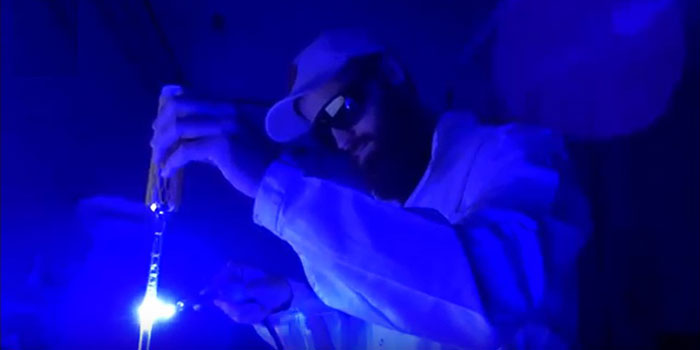A new method from HYPERMAG to optimize diagnosis via MRI scan
One of the most widely used scanning methods to detect early stages of diseases is magnetic resonance imaging (MRI), but the method needs a higher sensitivity and enhanced contrast to clarify diagnoses and reduce the number of errors. Three researchers from the Center of Excellence HYPERMAG are behind a new method based on water and UV light, which may be the solution. The study was recently published in Nature Communications Chemistry.

One of the most commonly used scanning methods to detect early stages of diseases is called magnetic resonance imaging (MRI). Unlike other scanning methods such as CT, X-ray, and PET scans, MRI is a more gentle method that provides insights into the body’s state of health without exposing the patient to potentially dangerous radiation. However, MRI needs a higher sensitivity and improved contrast on the scan images to clarify diagnoses and reduce the number of false positives and false negatives, respectively.
Three researchers from the DNRF’s Center for Hyperpolarization in Magnetic Resonance (HYPERMAG) at the Technical University of Denmark (DTU) have developed a new method that hyperpolarizes water and UV light that may be the answer to a more sensitive and improved alternative to optimize scan images by radiological examinations. The study was recently published in the scientific journal Nature Communications Chemistry.
“We irradiate a solution of water and pyruvic acid with UV light to create non-persistent radicals. The latter suddenly recombine in biocompatible diamagnetic species right after the dissolution of the hyperpolarized sample,” said Arthur Pinon, post-doc at HYPERMAG and lead author behind the study.
A contrast agent based on the heavy metal gadolinium is used in the vast majority of radiological examinations. However, since there is uncertainty as to whether gadolinium can be harmful to some specific patient groups, including patients with advanced kidney disease, a safer and more gentle alternative is needed. That is what the researchers from HYPERMAG hope to have found with their new UV- and water-based biocompatible method.
“With these labile radicals, we were able to hyperpolarize water molecules up to 70% and keep the high contrast intact because we got rid of the unwanted para-magnetism in the injectable solution. With our new approach, we improved by 14 times the state-of-the-art. So now that we have the tool, the next step will be pre-clinical implementation,” said Andrea Capozzi, who is also a post-doc at HYPERMAG and co-author behind the study.
